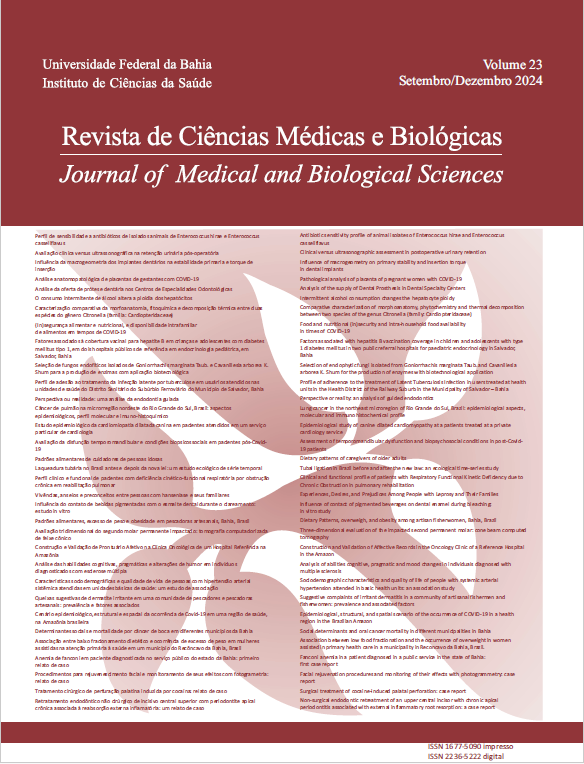Influence of macrogeometry on primary stability and insertion torque in dental implants
Primary stability and insertion torque in dental implants.
DOI:
https://doi.org/10.9771/cmbio.v23i3.57207Palavras-chave:
Implante dentário, Estabilidade primaria, Torque de inserção, Próteses e ImplantesResumo
Introdução: A estabilidade primária e torque de inserção dos implantes osseointegrados é fundamental para o sucesso da osseointegração, principalmente nos casos em que é instalada uma prótese com carga imediata. Objetivo: Este estudo teve como objetivo avaliar a influência da macrogeometria de dois tipos de implantes no torque de inserção e na estabilidade primária. Materiais e Métodos: Este estudo utilizou 40 implantes, sendo 20 cônicos e 20 cilíndricos, divididos em quatro grupos experimentais. Os implantes foram instalados por um único operador, em bloco ósseo sintético seguindo as recomendações do fabricante e a técnica de subinstrumentação. A estabilidade do implante foi avaliada imediatamente após a instalação por meio de análise de frequência de ressonância magnética, medida pelo Osstellâ. O torque de insterção foi determinado utilizando um motor cirúrgico de instalação de implante. Os dados resultantes foram submetidos à análise estatística utilizando o teste de Kruskal-Wallis, com o teste post hoc de Dunn empregado para determinar quaisquer diferenças significativas entre os grupos de implantes em termos de torque de inserção e estabilidade primária. Resultados: Observou-se diferença significativa na estabilidade bucolingual (p=0,002) e na estabilidade média (p=0,008), com tamanhos de efeito respectivos de 0,197 e 0,335. O torque de inserção também mostrou significância (p=0,018). Foi observada uma diminuição nos valores dos implantes 04×10 quando comparados aos implantes 3,5×10. Conclusões: Implantes com menor diâmetro tiveram maior estabilidade primária enquanto implantes de maior diâmetro mostraram maiores valores de torque de inserção.
Palavras Chaves: Implante dentário; estabilidade primaria; torque de inserção.
Downloads
Downloads
Publicado
Como Citar
Edição
Seção
Licença
Copyright (c) 2024 Revista de Ciências Médicas e Biológicas

Este trabalho está licenciado sob uma licença Creative Commons Attribution 4.0 International License.
A Revista de Ciências Médicas e Biológicas reserva-se todos os direitos autorais dos trabalhos publicados, inclusive de tradução, permitindo, entretanto, a sua posterior reprodução como transcrição, com a devida citação de fonte. O periódico tem acesso livre e gratuito.






